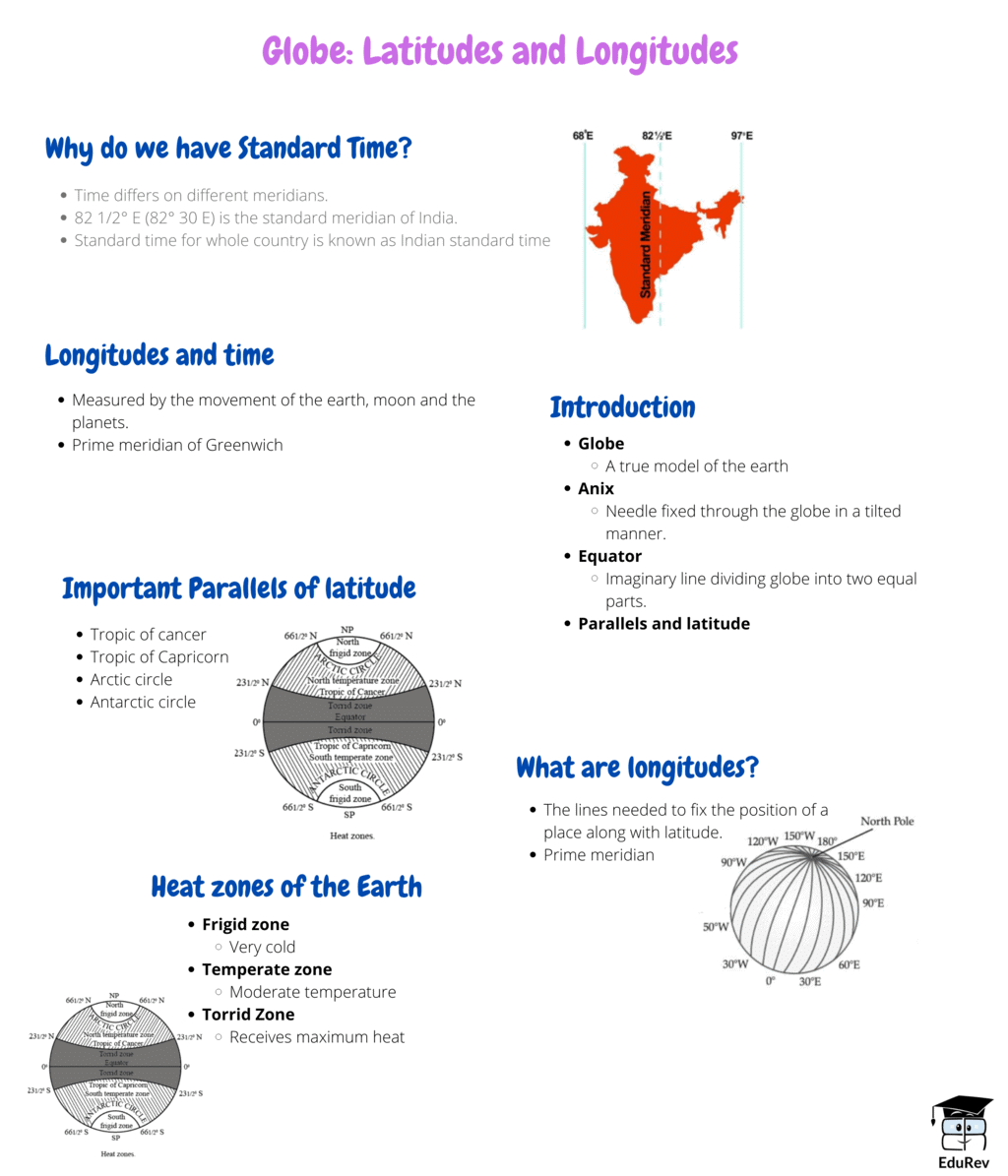Class 6 Exam > Class 6 Notes > Subject-Wise Mind Maps for Class 6 > Mind Map: Globe: Latitudes and Longitudes
Mind Map: Globe: Latitudes and Longitudes | Subject-Wise Mind Maps for Class 6 PDF Download

The document Mind Map: Globe: Latitudes and Longitudes | Subject-Wise Mind Maps for Class 6 is a part of the Class 6 Course Subject-Wise Mind Maps for Class 6.
All you need of Class 6 at this link: Class 6
FAQs on Mind Map: Globe: Latitudes and Longitudes - Subject-Wise Mind Maps for Class 6
| 1. What are latitudes and longitudes? |  |
Ans. Latitudes and longitudes are geographical coordinates used to locate a specific point on the Earth's surface. Latitudes are imaginary lines that run parallel to the equator, measuring the distance north or south of it. Longitudes, on the other hand, are imaginary lines that run from the North Pole to the South Pole, measuring the distance east or west of the Prime Meridian.
| 2. How are latitudes and longitudes measured? |  |
Ans. Latitudes are measured in degrees, minutes, and seconds, with the equator serving as the reference point at 0 degrees. The North Pole has a latitude of 90 degrees north, while the South Pole has a latitude of 90 degrees south. Longitudes are also measured in degrees, minutes, and seconds, with the Prime Meridian serving as the reference point at 0 degrees. East longitudes are measured up to 180 degrees east, and west longitudes are measured up to 180 degrees west.
| 3. Why are latitudes and longitudes important? |  |
Ans. Latitudes and longitudes are crucial for navigation and mapping purposes. They help in determining the exact location of a place on the Earth's surface, enabling accurate navigation by ships, airplanes, and GPS systems. They also aid in creating accurate maps and globes, making it easier to understand and study the Earth's features, climate patterns, and time zones.
| 4. How do latitudes and longitudes help in determining time zones? |  |
Ans. Longitudes play a significant role in determining time zones. The Prime Meridian, which passes through Greenwich, London, is considered as the starting point for measuring longitudes. As the Earth rotates, different longitudes experience different times. Each 15 degrees of longitude represents one hour of time difference, with the time increasing by one hour for every 15 degrees east and decreasing by one hour for every 15 degrees west.
| 5. Can latitudes and longitudes be used to locate any point on the Earth's surface? |  |
Ans. Yes, latitudes and longitudes can be used to locate any point on the Earth's surface. By combining the latitude and longitude coordinates, one can pinpoint the exact location of a place. However, it's important to note that latitudes and longitudes provide the relative location of a point and not the exact address. To specify the exact address, additional information such as street names or landmarks would be needed.
Related Searches

















